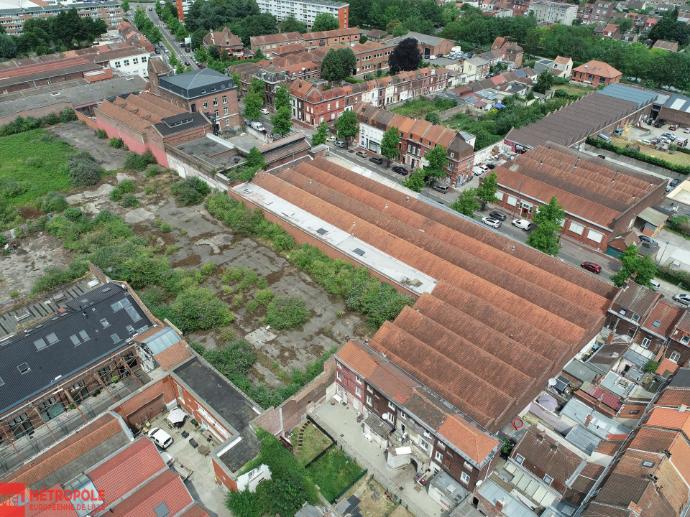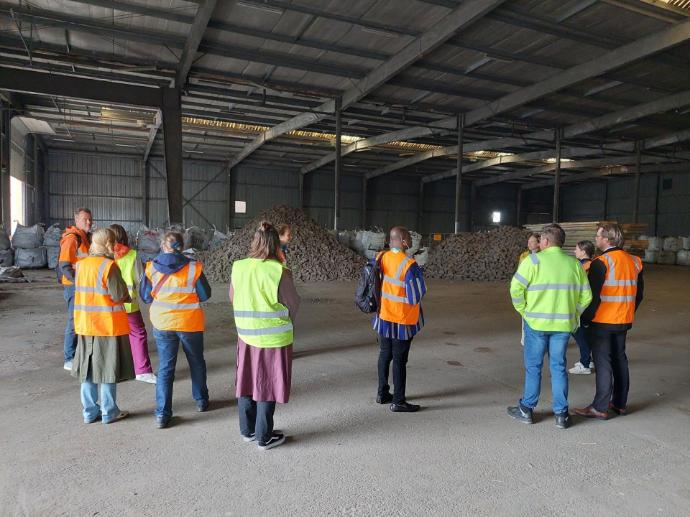Did you know? In 2017, it was estimated that less than 1% of building components in the EU were reused after their first use. This worrying figure highlights the urgent need for more sustainable material management in the construction sector.
The PREUSE (Public Responses to Enable the Use of Salvaged Building Elements) project is tackling this challenge by seeking to support public authorities integrate material reuse into their building management practices. Targeting cities, regions, and public actors, the project aims to develop and test reuse centres, a space for the storage and processing of materials, enabling these actors to organise their salvage and reuse internally.
From one project to another
PREUSE builds on the success of a previous Interreg NWE 2014-2020 project, FCRBE, which brought together 11 organisations with varied and complementary skills, united by a common goal: to facilitate the adoption of material salvage and reuse practices in construction. The project carried 37 pilot operations and live tests and developed a series of tools to promote the reuse of building materials, including directories of salvage dealers, technical documentation, and best practice guides for construction professionals. Their 5-year work resulted in:
- + 2 309 tons of materials recovered
- + 321 tons of materials reused
While FCRBE focused on clients, architects and construction companies, PREUSE complements and reinforces the range of solutions engaging public authorities in the process.
Building a future from the past: How three cities are pioneering reuse centres
Every city carries the weight of its history in its streets, buildings, and materials. But what if those materials, instead of being discarded, could help shape the cities of tomorrow? And how does the journey look like from dismantling the original building to the reinstallation in a new development?
Scroll through the slide show and discover how each of the pilot sites is aiming to turn past into future.
Lorient, France
A city shaped by the tides, Lorient has a long history of rebuilding itself. Severely damaged during World War II, the city experienced rapid reconstruction in the 1960s and 70s, leading to large social housing developments. Today, one of these districts—Bois-du-Château—is undergoing a major 10-year transformation conducted by the City of Lorient.
With a strong track record in urban planning and construction, they are using this opportunity to set up a reuse centre as part of this larger urban operation. And they will focus on a specific type of building element: materials salvaged from 1960-70s social housing. This reuse model is designed in a way to be transferable to other renovation sites in the future.
 © La Ville de Lorient|Aerial view of the Bois-du-Château neighbourhood
© La Ville de Lorient|Aerial view of the Bois-du-Château neighbourhood
Roubaix, France
 © La Fabrique des Quartiers|Drone view of Boulevard de Metz, Roubaix
© La Fabrique des Quartiers|Drone view of Boulevard de Metz, Roubaix
Roubaix was once at the heart of France’s booming textile industry, its factories producing goods for markets around the world. But with industrial decline came economic hardship, and today, many old manufacturing sites lie abandoned. The local authorities, however, is determined to give these spaces a new purpose.
Through the PREUSE project, a reuse centre will be developed as part of a wider strategy to revitalise a former industrial wasteland. Steered by La Fabrique des Quartiers, on behalf of the European Metropolis of Lille, the reuse centre will be situated in the historical neighbourhood “Cul de Four”. The reuse centre will be dedicated to building materials for professionals, and specifically materials salvaged from the renovation of early 20th century workers' houses like bricks, cement tiles, doors, in link with the town’s New National Programme for Urban Renewal.
Also referred to as a ‘plateforme réemploi’, this centre is hoping to set an inspiring precedent for other public authorities interested in developing similar schemes.
Utrecht, The Netherlands
In the Netherlands, roads are a defining feature of the landscape. But what happens to the materials when streets are dug up and repaved? In Utrecht, a pioneering initiative is rethinking how roadworks can contribute to a circular economy.
The City of Utrecht has already experimented with reuse, successfully conducting a live test to boost reuse of construction materials in a public space development. Through PREUSE, they aim to take it one step further: expanding the range of salvaged materials and developing a municipal reuse centre primarily dealing with materials for public space and infrastructure projects, such as pavement and street furniture.
 ©PREUSE |Partners' visit to Utrecht reuse centre during Future Green City Congress
©PREUSE |Partners' visit to Utrecht reuse centre during Future Green City Congress
Previous
Next
Stay tuned as these pilots progress—building a more circular future, one brick at a time.
Want to know more about the project activities, partners and events?
PREUSE website
PREUSE key figures
- 9 partners
- 4 countries: Belgium, France, Luxemburg, Netherlands,
- Cooperating from 2023 to 2028
- Budget: € 6.8 M

